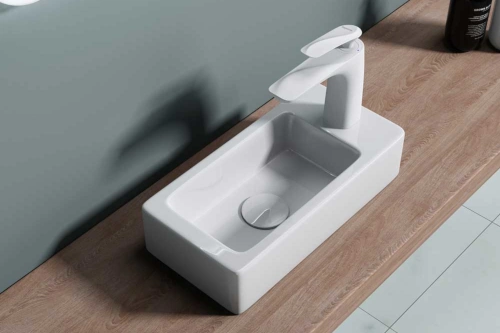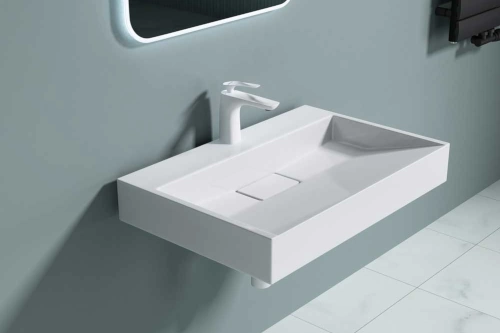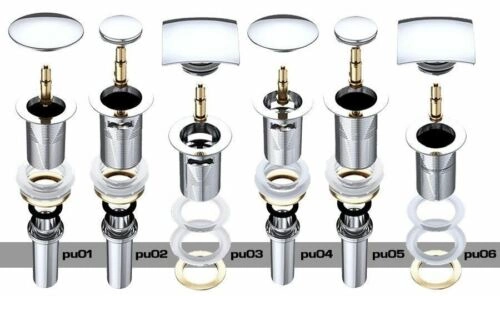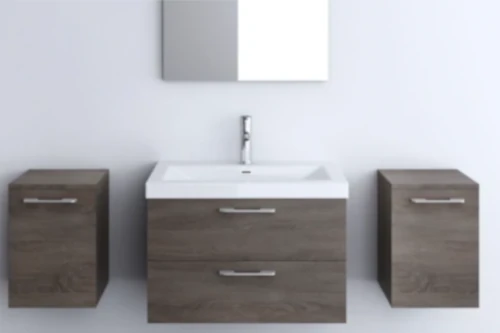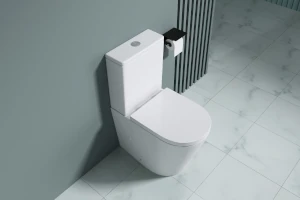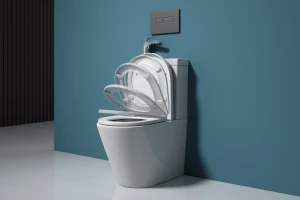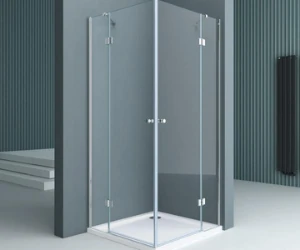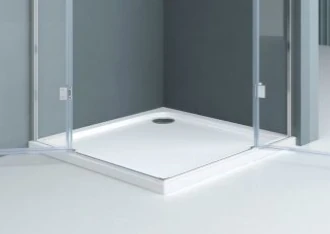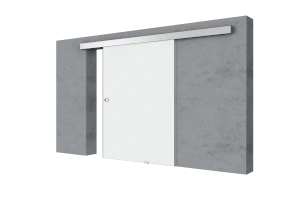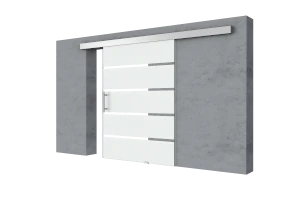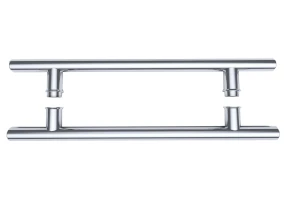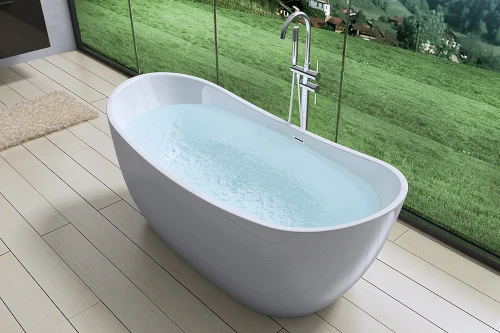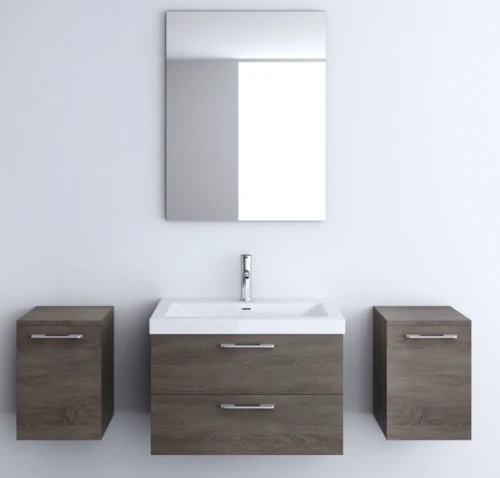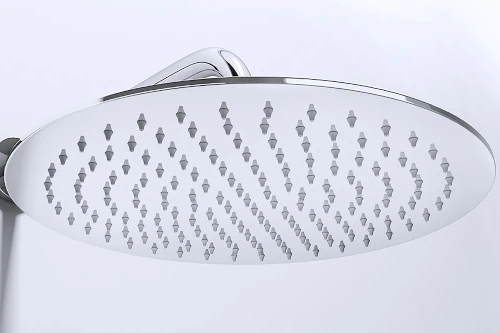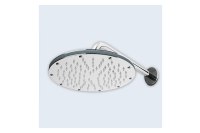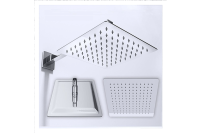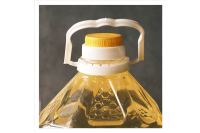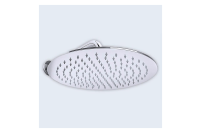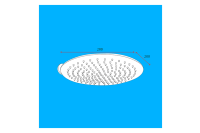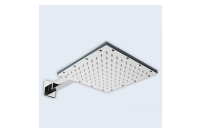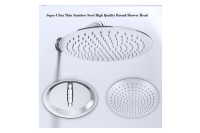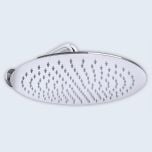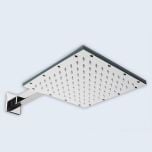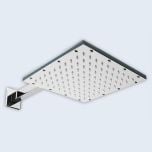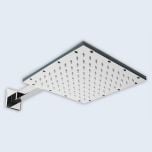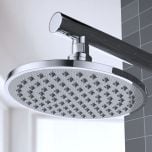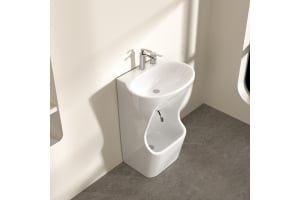We use cookies. For more info, please check cookie policy.
Shower Heads: All Your Questions Answered
Shower Heads: All Your Questions Answered
Table of Contents
- Shower Heads: All Your Questions Answered
- An Introduction To Shower Heads
- How Does A Shower Head Work?
- How Often Should I Swap My Shower Head?
- The History Of Shower Heads
- Which Shower Head Is Right For Me?
- Shower Head Shapes
- Ideal Water Pressure For Shower Head
- Should I Get A Rainfall Shower Head Or A Regular Shower Head?
- Shower Head Sizes
- Shower Head Mounts
- Materials
- Shower Head Price
- How To Clean My Shower Head
- Conclusion
An Introduction To Shower Heads
While it is obvious you should shower, yes even you, it is not always obvious what the best tools for showering are. For example, you obviously need a shower head, but which shower head? Is it best to use a circular shower head or a square shower head? Which gives a better clean, a waterfall shower head or an eco-shower head? Which shower head is best for local type of water?
For the answers to all these questions and more, read on as we explore the history and variety of shower heads, while answering all of your questions.
How Does A Shower Head Work?

A shower head is a very simple tool. When the water is summoned through the pipes through the use of pressure, the shower head is the final destination. The head acts as a container with specific exits. These specific exits, spaced out in a way to maximise coverage, allow the shower water to flow out of the shower and onto you. Think of it as a sieve but instead of filtering things into two categories, one that stays and one that goes, it filters the water into many categories, all of which leave through separate doors.
How Often Should I Swap My Shower Head?
The answer may surprise you. You should actually change your shower head around every six months. This is because the general wear and tear of processing hot and cold water can cause degradation in the shower head, including rust, limescale and gunk build up. To ensure you stay clean and the shower stays clean, it is best to swap your shower head every six months.
It is worth noting that if you live in an area with hard water, you should change the shower head more often, because the high concentration of minerals in your water is likely to cause degradation at a much faster rate than soft water. But, more on that later.
The History Of Shower Heads
First, there was a waterfall. Humans used to use the naturally flowing water of waterfalls as a way to more effectively bathe. Eventually, man tried to capture the effect of the waterfall inside the comfort of their own home and William Feetham invented the first mechanized shower, which also featured the first mechanized shower head. It worked by filling a container held above the occupant’s head with water and then releasing it all as a flowing shower. Essentially, it was both the shower head and the water tank. As you can imagine, the new modern shower head that simply provides water and doesn’t store gallons of the stuff dangling above your head is a bit safer.
Which Shower Head Is Right For Me?
So, we now understand what a shower head is, where they came from and how important it is to regularly cycle through them. However, we still do not know which shower head to utilize in our bathroom. To answer that question, we must first analyse all of the different types of shower head, define their benefits and drawbacks and apply those to the context of your life to see which shower head best suits you, so let’s get to it.
Shower Head Shapes
First of all, let’s look at the different shapes of shower head and see which is best suited to your shower.
Round Shower Head

The most fundamental difference between round and square shower heads, such as round shower heads have a more classical connotation due to their curved design. However, the other primary difference is that round shower heads are typically angled, as to throw water over you, whereas square shower heads lay flat as to drop water on to you. Because of the angled streaming of water, the use of round shower heads can take up more space. This makes them ideal for large shower enclosures where you can move around a lot, however it makes them less ideal for smaller shower enclosures where space is limited.
Square Shower Head

Square shower heads look modern thanks to their contemporary, angular designs. As well as this, their design makes them suited to smaller shower enclosures as their flat laying design means their stream of shower water takes up minimal space. However, if you are looking for increased maneuverability, this could be less than ideal when compared to the round shower head.
Ideal Water Pressure For Shower Head
Believe it or not, but water pressure is one of the most important factors to keep in mind when choosing your shower head. This is because water pressure dictates how much water your shower uses per minute, and by extension how much money your shower costs per minute. Luckily, some shower heads have the ability to alter the water pressure as it exits the head.
Low pressure shower heads disperse the water and use air pockets to send it out in more fragmented intervals. This means you use much less water than a typical shower, but in turn have a softer showering experience that takes longer to change temperature.
Meanwhile a high pressure shower head condenses the water and pushes it out more consistently. This makes for a harder shower that can change temperature much quicker, however it also uses much more water.
In the end, whether low water pressure or high water pressure is right for you is completely up to your discretion and your priorities.
Should I Get A Rainfall Shower Head Or A Regular Shower Head?

Another decision you will have to make is whether to have a classically flowing shower head, or a rainfall shower head. The fundamental difference is that a rainfall shower head, funnily enough, mimics rainfall. It does this by dripping low pressure water directly on to you, whereas a classical showerhead uses higher pressure water in an arc.
Naturally, a rainfall shower head is suited to being a square shower head and a classic shower head is suited to being a rounded shower head, due to their typical positioning.
The only real benefit to either side is how they feel. If you want to feel like your showers, are you being caught in a spout of warm rain, then a rainfall showerhead is ideal for you. If you prefer your shower to feel like a shower, then you want a classical shower head.
Shower Head Sizes

On top of all your other decisions, you also need to decide which shower head size you wish to buy. These range from an extra small 200mm shower head to an extra-large 400mm shower head. Naturally, a larger shower head has a wider simultaneous spread of water, whereas a smaller shower head has a smaller area of effect. Because of this, this decision should come down to how much of your body you want covered by water simultaneously. It is best to go for the size of shower head that gives you the most coverage, without wasting water, so take your width into account and choose from there.
Ultra-Thin Shower Head

As well as the surface area of the shower head, you can also choose the thickness of the head. Durovin Bathrooms offers a range of sizes, including our ultra-thin shower heads that have a minimalist 2mm thickness. These designs are perfect for minimalist, modern bathrooms with angular aesthetics.
Shower Head Mounts
Another choice you will have to make is the choice between the different types of mounts. The best mount for you depends on a lot of factors, so let’s dive in.
Wall Mounted Shower Head
A wall mounted shower head is perfect for any three panel or less shower enclosure. This is because these types of shower enclosure utilize at least one wall face in their design which make for the perfect mounting for shower heads. The benefit of a wall mounted shower head is that in some instances, the plumbing can be more hidden. Plus, by having a specific location water always comes from and lands, you can learn exactly how to position yourself, whereas with a detachable shower head, it is always movable so you will need to always reposition it.
Ceiling Mounted Shower Head
A ceiling mounted shower head has much the same benefits of a wall mounted shower head, except for the fact it can be used in any shower enclosure, not just ones that need a wall. This is because by dangling from the ceiling, it can be placed over any enclosure. This means it is suitable no matter what enclosure you have. However, a ceiling mounted shower head is much more complicated to install and maintain, so beware.
Detachable Shower Head
A detachable showerhead has many uses, stemming from the fact it can be moved around. This is achieved by attaching a shower head to a loose, flexible pipe that connects it to the water supply. This is especially beneficial for those with less mobility as the shower can contort around you, rather than the other way around. However, it can also be inconvenient if you are in a rush as due to it’s mobile nature, there is no stock position that it will default to for ease.
Swivel Shower Head
A swivel shower head is the happy medium between the wall mounted shower head and the detachable shower head. It has the fixed, consistent positioning of a wall mounted shower head, but also features the maneuverability of a detachable shower head by being able to swivel and cover different angles.
Materials
Shower heads come in a wide variety of materials, all of which suit different bathrooms. Let’s break it down.
Polished Chrome Shower Head

Polished chrome shower heads are gorgeous, shining and metallic shower heads that look extremely modern and fit in in any contemporary bathroom. For the full effect, pair them with chrome basin taps to give a unified feel.
Brass Shower Head
Brass shower heads have a beautiful brown hue to them which pairs very well with blue. If you are looking to make an aquatic themed bathroom, brass shower heads are perfect for you.
Plastic Shower Head
Plastic shower heads have that wonderful retro chic vibe to them. They’re straight out of the 80’s and come in an assortment of different colours. If you are looking for a throwback in your bathroom, you’re looking for plastic shower heads.
Shower Head Price
Durovin’s shower heads vary in price from #33.98 to #62.82 depending on size, shape and mount type. This means that no matter your budget, you can find an affordable and aesthetic shower head perfect for your bathroom.
How To Clean My Shower Head

Once you have acquired and utilized a shower head, how do you maintain and clean it?
It’s actually quite simple! All you have to do is soak the shower head in vinegar for between thirty minutes and an hour, then rinse it with water and dry it with a cloth. This will get rid of any blemished and burgeoning limescale buildup. We recommend you doing this every couple of weeks if you utilize hard water, as it can easily evolve into a serious problem if you let its mineral deposits build up.
Conclusion
Now that you understand everything there is to know about shower heads, you are well equipped to venture out and find the perfect one for you. We humbly suggest you start this quest here, at durovinbathrooms.com as we have a wide variety of high quality shower heads just right for any bathroom.


